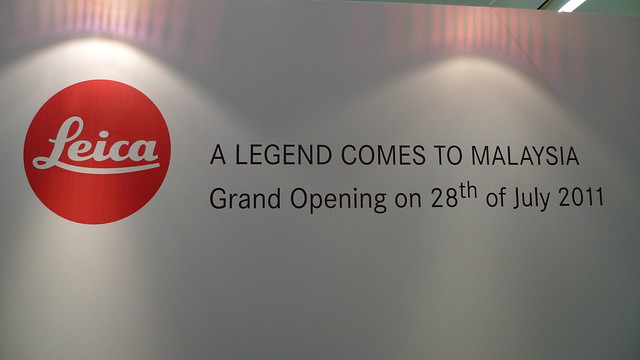
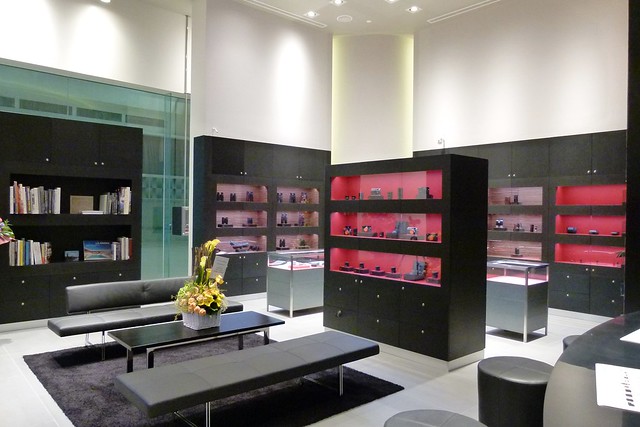
The new Leica Store at Avenue K! Opened on 28 July 2011 this 1,500 sq ft store is owned by Lagenda Manusia in partnership with Leica Camera Asia Pacific. This is the ultimate camera shop in the camera world!
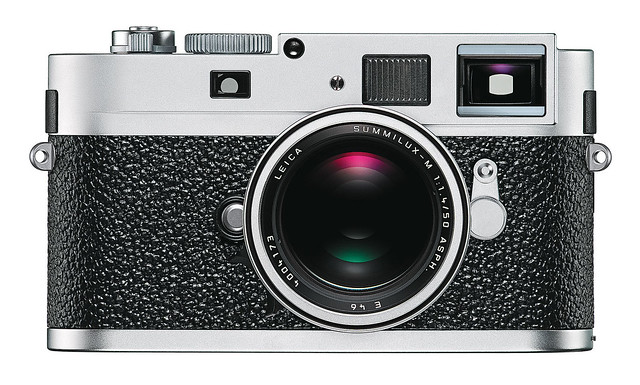
The new Leica M9-P costs a minimum of RM 35,940 to RM 67,120 depending on the lens!
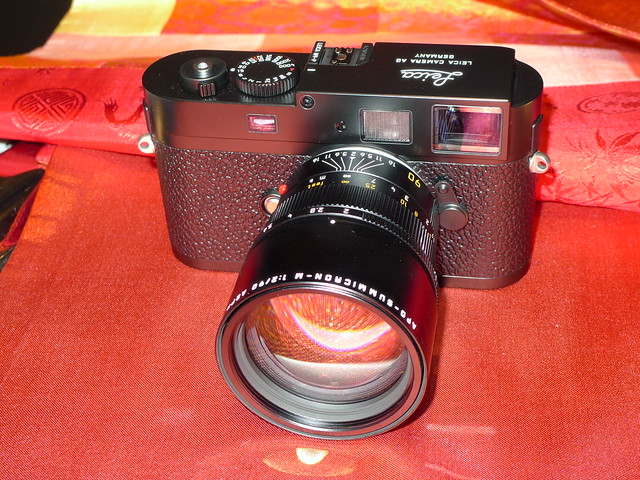
The new Leica M9-P has no logo upfront, only the name on the deck. This Leica M9-P is available ONLY at Avenue K and nowhere else in Malaysia so any purchases elsewhere in Malaysia might lead to guarantee problems and servicing issues later
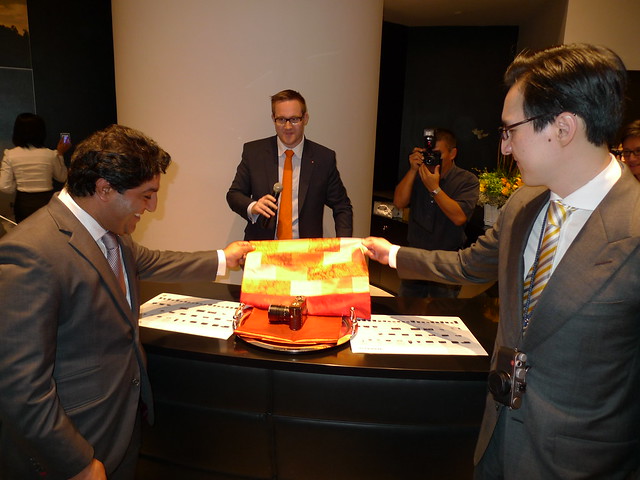
Sunil Kaul, managing director of Leica Camera Asia Pacific, Mathieu Musnir, sales manager of Leica and Sean Yap of City Properties
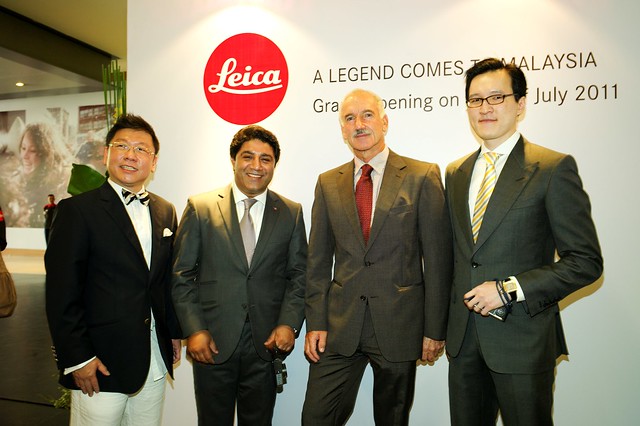
The 4 Heavenly Kings; Sim Hai Yeun, GM of Leica Store Malaysia, Sunil Kaul, MD of Leica Camera Asia Pacific, German ambassador Dr Guenter Gruber and Sean Yap of City Properties
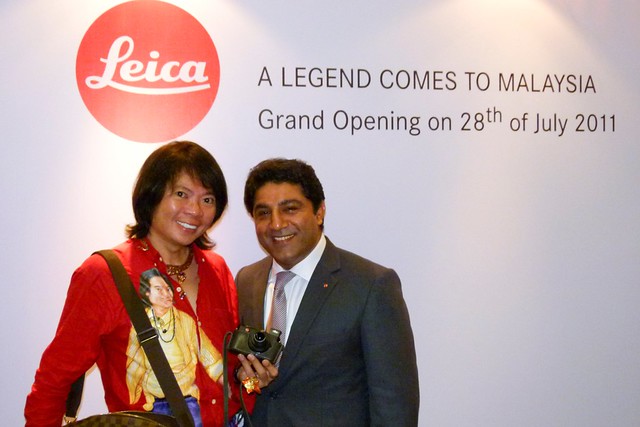
Kee Hua Chee holds his limited edition Leica D-Lux 4 given to him by Her Royal Highness Sultanah Kalsom of Pahang and Sunil Kaul, MD of Leica Camera Asia Pacific
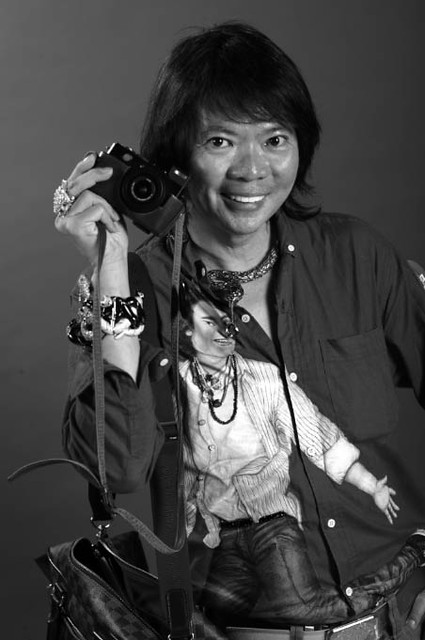
Vintage look but both Leica and Louis Vuitton messenger bag, gift from Princess Becky Leogardo, are new
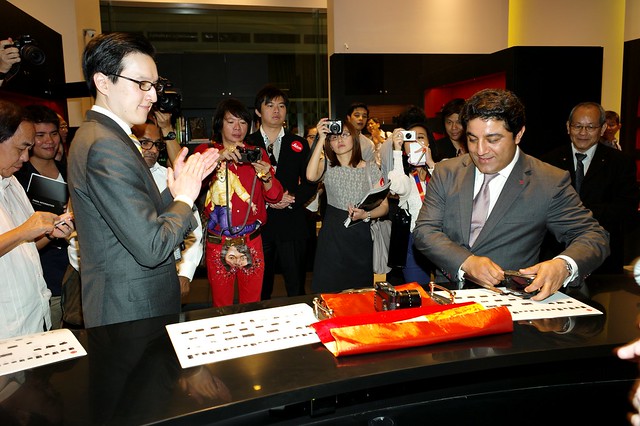
Sean Yap and Sunil Kaul unveiling the new Leica M9-P
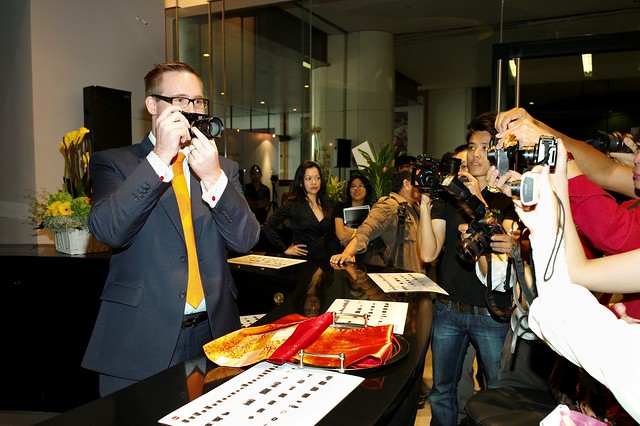
Mathieu Musnier photographing the photographers photographing him!
The world's greatest, finest and most progressively outstanding camera is Leica M9-P. Pictured below in classic silver chrome finish, it weighs only 600 grams, measures 139 x 37 x 80 mm and costs RM 29,120 for the body alone which is meaningless as it is useless! The lenses start from RM 6,820 all the way to a staggering RM 38,000! So the minimum cost is RM 35,940 up to RM 67,120. If you think this is outrageous, the new Leica Showroom at Avenue K has a M9 Titanium at RM 118,888.88! What a lucky number for both Leica and the new owner! This M9 Titanium is the super-ultimate camera on Planet Earth! The Leica store at Avenue K also offers binoculars, rifle scopes, spotting scopes, binoculars and telescopes. Call 03-2163 1818 to reserve the M9 Titanium which is still available but hurry!
But not all Leicas cost the earth; the cheapest Leica costs RM 2,380 for the V-Lux 30! This compact camera slips into any bag or pocket so carry it with you at all times for that Leica Experience!
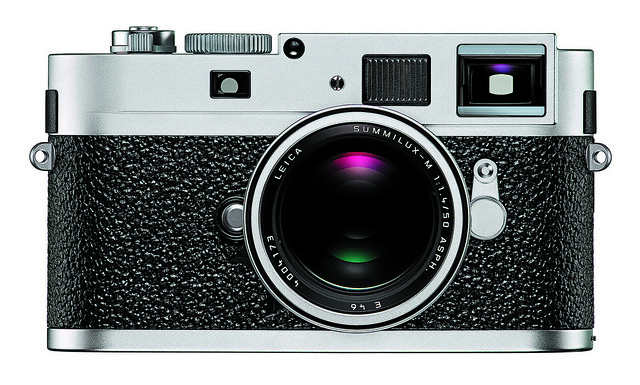
No ifs, buts or maybes.
It is so refreshing and relaxing and stress-free to find something that everyone agrees upon! Usually there is a slew of claimants as which brand is best or which specific camera is finest.
Even Leica's rivals and enemies have to swallow their gall and bile and admit Leica M9-P is better by leaps, bounds and jetplane flight.

This black version is the other option available with minor difference. The leathering allows great, sturdy grip. Professional photographers tended to tape over the trademark red Leica logo to make the camera even more lowkey and less ostentatious since everyone recognises the red circle with the word 'Leica' inside! To me, this is pure foolishness to hide the name after paying through the nose for it but then, I am not a professional photographer though mind you, anyone shooting from this camera produces professional results with eyes closed. Leica has succumbed to the pixmen's desire for anonymity and discretion and has removed the red dot symbol that elicits such strong emotion. Even the M9 lettering on the front has disappeared! Only the top deck carries the name!

Sunil Kaul showing the RM 118,888.88 Leica M9 Titanium, the world's most expensive and finest camera! The box alone from compressed paper took weeks to complete!
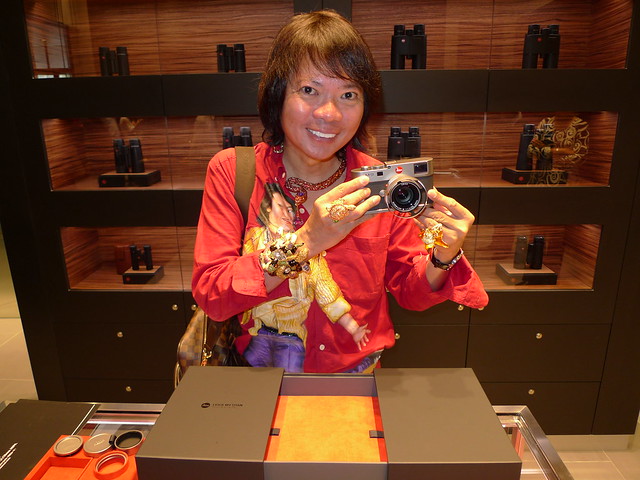
Kee Hua Chee was momentarily worth at least RM 118,888.88 excluding his bling!
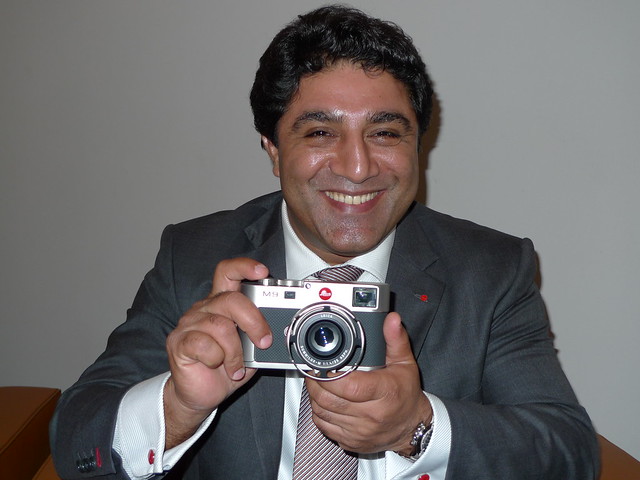
So did Sunil Kaul but he is the boss so he can hold this M9-P as long as he liked!
No need waste time arguing, punching each other in the mouth, pulling hair and scratching each other's eye out. The verdict is in and Leica is the best camera brand in the observable universe and its new Leica M9-P is the bestestest camera on this planet in this kalpa although in other kalpas there may be better cameras but we are living in this kalpa so we have to be realistic and adhere to rules of quantum physics.
I should know as I have a Leica Limited Edition D-Lux 4 so kindly given to me by Her Royal Highness Sultanah Hajjah Kalsom of Pahang. All she did was walked into a camera shop and asked for the best compact camera and she was shown the Leica which she bought!
Each time I produced my stylo-mylo Leica, the high class members of society would automatically murmur "A Leica...waaaa you must be so rich and successful"! Of course I AM rich (spiritually, mentally, psychically and physically but not yet financially!) and successful as the greatest journalist this side of the observable universe!
But I swear, all connoisseurs recognise and appreciate Leica cameras though they may not own one or even wish to buy one. But admiration? Totally! The same applies to connoisseurs looking at a Ferrari, Rolls-Royce, Cartier tourbillon, gold Rolex, 200-carat diamond, painting by Leonardo da Vinci, superb Ming vase or Niagara Falls. You may not be interested to buy or have no money to get one or go to Niagara Falls but this does not stop you from marvelling at such works of art and nature.
I also LOVE the fact a Leica looks like it is an old vintage camera or that it comes straight from 1954...because the Leica M CAME from 1954! Howzat?
Yes, Leica stormed the photographic world in 1954 and INCREDIBLY, the lenses your grandfather bought in 1954 CAN still be used in the brand new Leica M9-P today! Yes, almost all the 1954 lenses can be used today which says a heck of a lot for the durability and timelessness of a Leica, all of which look alike!
This is another trademark of Leica found in the DNA of all best-selling brands. Notice how you recognise a Mercedes-Benz or Bentley or BMW instantly as each model shares similar traits. Or a quilted Chanel bag or Louis Vuitton Monogram bag that comes in countless versions but all using the same identical Monogram canvas? The Birkin handbag (around RM 37,000 with 3 year wait list) has not changed one iota since 1984! And proving a great design is ageless, this new Birkin was based on a 1892 design! In this case, one Leica looks remarkably like another Leica from a different series which proves great design stands the test of time...
...and wear and tear!
The sapphire glass LCD cover is almost unbreakable and impervious to, as William Shakespeare would say, the slings and arrows of normal usage of daily living! A vintage Leica is still used by professionals or kept as back-up while the professional pixman uses the new Leica. Of course I would not test Leica's claim its sapphire crystal cover is shatter-proof by smashing it against the wall but it is nice to know it is as rugged as it looks.
TECH DETAILS
The Leica M9-P.
Technologically at the same high level as the successful
Leica M9, the new M model offers special characteristics to meet the particular needs of
professional photographers. We have therefore created the M9-P as the ideal tool for
professional users who demand compact and discreet camera equipment with a long working
life and simultaneously appreciate the advantages and benefits of Leica M photography. The
‘P’ in its name, already used in the past for several models, positions the camera in the line of
Leica M cameras specially conceived on the basis of the wishes of professional
photographers. The Leica M9-P is a complement to the Leica M9. Both models will be
marketed together.
Since 1954, the Leica M system has stood for an unmistakable, individual kind of
photography and a very conscious photographic style. Because, with a Leica M, the
photographer becomes a part of the action in the process of capturing challenging and
creative images. The rangefinder frames precisely the shot the photographer envisages while
allowing a clear view of what is going on outside the viewfinder frame. This allows the
photographer to predict the decisive moment and capture it discreetly and reliably at the
right moment – in all fields of photography, from photojournalism and ‘available light’ to the
capture of discreet and aesthetic, fine-art images.
The functions of the Leica M are consistently constructed for extreme robustness and a long working life. Highest quality
materials, elaborate manufacturing processes and painstaking manual assembly guarantee M
cameras functional reliability for decades to come. The full system compatibility – almost all
lenses of the Leica M range built since 1954 can still be used on the latest M camera models
– is an important factor in the enduring value of the M series.
These core values of the Leica M system have been consistently maintained in the new M9-P.
The technical features of the Leica M9-P are identical to those of the M9, however, in
comparison, the typical Leica M product characteristics, like robustness and discretion, have
been further improved.
The Leica M9-P features an extremely scratch-resistant, sapphire crystal, cover
for its LCD screen. This material is so hard that it can only be worked with special diamond
cutting tools and is one of the world’s hardest materials. In consequence, the sapphire glass
LCD cover is extremely resistant to wear and almost unbreakable. In practical terms, it is so
resistant to so many kinds of wear and stresses that the camera is ideally equipped for many
years of reliable use. Thanks to an anti-reflective coating on both sides of the cover, image
reviewing on the screen of the M9-P in unfavourable lighting conditions is now even better.
This provides photographers with an ideal tool for optimum assessment of images both
during composition and after capture.
The leathering of the body of the M9-P is also particularly resistant to wear. The vulcanite
leathering features a more pronounced structure that lends the camera particularly good grip
characteristics. This means that the M9-P feels particularly safe and secure in the hand, a
fact that further enhances the already simple handling of the Leica M camera.
A further outstanding feature of the Leica M9-P is its minimalist styling with a focus only on
what is really necessary. Many professional photographers who already rely on Leica cameras
tend to tape over the Leica red dot to make their cameras as unobtrusive as possible. For this
reason, and in favour of absolute discretion, this typical red dot symbol and the M9 lettering
on the front of the new professional camera have been omitted. Instead, the top deck is now
engraved with the classical script form of the Leica name.
The Leica M9-P is now available in two different finishes from all authorised Leica dealers: in
black paint finish or in the traditional silver chrome version.
BELOW ARE TECHNICAL DATA FOR LEICA MP WHICH IS AS LENGTHY AS MY ARTICLE! THERE ARE NO MANY VALUE-ADDED FEATURES!
Camera type: Compact digital view and rangefinder system camera.
Lens attachment: Leica M bayonet with additional sensor for 6-bit coding.
Lens system: Leica M lenses from 16 to135 mm.
Picture format / Image sensor: 5270 × 3516 pixels (18.5 megapixels) CCD chip, active
area approx. 23.9 × 35.8 mm / 5212 x 3472 pixels (18
megapixels) (corresponding to usable format of analog
Leica M models)
Resolution: Adjustable, DNG™: 5212 × 3472 (18 MP),
JPEG: 5212 × 3472 (18 MP), 3840 × 2592 (10 MP),
2592 ×1728 (4.5 MP), 1728 ×1152 (2 MP),
1280 x 846 pixels (1 MP).
Data formats: DNG™ (raw data), choice of uncompressed or slightly
compressed (by non-linear reduction of color depth), 2
JPEG compression levels.
File size: DNG™: 18 MB (compressed) 36 MB (uncompressed)
JPEG: approx. 2 to10 MB.
Color spaces: Adobe® RGB, sRGB.
White balance: Automatic, manual, 7 presets, direct color temperature
selection.
Storage media: SD cards up to 2 GB / SDHC cards up to 32 GB.
Menu languages: German, English, French, Spanish, Italian, Japanese,
traditional Chinese, simplified Chinese, Russian.
Compatibility: Windows® 7, Windows® XP/Vista®; Mac® OS X (10.6)
Exposure metering: Exposure metering through the lens (TTL), centreweighted
with working aperture. Center-weighted TTL
metering for flash exposure with system-compatible
SCA-3000/2 standard flash units.
Measurement principle: Measured by light reflected by bright shutter blades on
the first shutter curtain.
Metering range: (at ISO 160/23°) At room temperature and normal
humidity corresponds to EV 0 to 20 or f/1.0 and 1.2 s to
f/ 32 and 1/1000 s. Flashing left triangular LED in
viewfinder indicates values below metering range.
Measurement cell for available
light: (continuous light measurement) Silicon photo diode with
condensing lens, positioned in the bottom center of
camera base.
Sensitivity range: ISO 160/19° to ISO 2500/35°, adjustable in 1/3 ISO
increments, with aperture priority A and manual
exposure setting, choice of automatic control or manual
setting, automatic control in snapshot profile.
Exposure mode: Choice of automatic shutter speed control with manual
aperture selection – aperture priority A – with
corresponding digital display, or manual setting of
shutter speed and aperture and adjustment using LED
light balance with indication of correct exposure, or risk
of overexposure / camera shake (with snapshot profile
only).
Flash unit connection: Via accessory shoe with center and control contacts.
Synchronization: Optional synchronization on first or second shutter
curtain.
Flash sync speed: 1/180 s; longer shutter speeds possible.
Flash exposure metering: (With SCA-3501/3502 adapter or SCA-3000-standard
flash unit, e.g. Leica SF 24D / Leica SF 58). Control with
center-weighted TTL pre-flash metering.
Flash measurement cell: 2 silicon photo diodes with condensing lens in camera
base.
Flash exposure compensation: ±3 1/3 EV in 1/3 EV steps adjustable on the SCA-
3501/3502 adapter. On Leica SF 24D, ±3 EV
in 1/3 EV steps with computer control or from 0 to –3
EV in 1 EV steps / on Leica SF 58 adjustable in all
modes ±3 EV in 1/3 EV steps.
Displays in flash mode: Flash readiness: flash symbol LED in the viewfinder
constant. Correct flash exposure: LED constant or
flashes rapidly after exposure. Underexposure: LED
extinguished after exposure.
Viewfinder principle: Large, bright-line frame viewfinder with automatic
parallax compensation.
Eyepiece: Adjusted to -0.5 dpt. Correction lenses for –3 to +3 dpt.
available.
Image framing: By activating two bright-line frames: for 35 and 135 mm,
or for 28 and 90 mm, or for 50 and 75 mm. Automatic
activation when lens is attached. Any pair of bright-line
frames can be activated by using the image field
selector.
Parallax compensation: The horizontal and vertical difference between the
viewfinder and the lens is automatically compensated
according to the relevant distance setting, i.e. the
viewfinder bright-line automatically aligns with the
subject detail recorded by the lens.
Matching of viewfinder and
actual picture: The size of the bright-line frame corresponds exactly to
the sensor size of approx. 23.9 × 35.8 mm at a setting
distance of 1 meter. At infinity setting, depending on the
focal length, approx. 7.3% (28 mm) to 18 % (135 mm)
more is recorded by the sensor than indicated by the
corresponding bright-line frame and slightly less for
distances shorter than 1 m.
Enlargement: (for all lenses) 0.68×
Large basis rangefinder: Split or superimposed image range finder shown as
bright field in the center of the viewfinder image.
Effective rangefinder base: 47.1 mm (actual rangefinder base 69.25 mm ×
viewfinder enlargement 0.68×).
Viewfinder display: (Lower edge) LED symbol for flash status. Four-digit
seven-segment digital display with dots above and
below, display brightness adjusted for ambient
brightness, for: Warning of exposure compensation,
display for automatically generated shutter speeds in
aperture priority mode, indication of use metering
memory lock, warning that the metering or setting
ranges are over- or underexposed using aperture priority
and counting down exposures longer than 2s.
LED light balance with two triangular and one central
circular LED for manual exposure setting. The triangular
LEDs give the direction of rotation of the aperture ring
and shutter speed setting dial to adjust the exposure.
Also as warning for over- or underexposure.
On rear panel: 2.5" monitor (color TFT-LCD) with 230,000 pixels. M9-P
LCD with sapphire crystal.
Shutter: Microprocessor-controlled, exceptionally low-noise metal
blade shutter with vertical movement.
Shutter speeds: For aperture priority (A) continuously adjustable from 32
s to 1/4000 s. For manual setting 8 s to 1/4000 s in
half steps, B for long exposures of any duration (in
conjunction with self timer function, i.e. 1st release =
shutter opens, 2nd release = shutter closes, (1/180 s)
fastest shutter speed for flash synchronization.
Shutter cocking: Using low-noise integral motor, optionally after releasing
the shutter release button.
Series exposures: Approx. 2 pictures/s, ≥ 8 pictures in series.
Shutter release: Three levels: Exposure metering on – Metering memory
lock (in aperture priority mode) – Shutter release.
Integrated standard cable release thread.
Self timer: Delay optionally 2 (aperture priority and manual
exposure setting) or 12 s (menu setting), indicated by
flashing LED on front of the camera and corresponding
display on the monitor.
Switching the camera on / off: Using the main switch on the camera’s top panel,
selectable automatic power-off for camera electronics
after about 2 / 5 / 10 minutes, reactivation by pressing
the shutter release button.
Power supply: 1 lithium-ion battery, nominal voltage 3.7 V, capacity
1900 mAh. Capacity display in monitor, when shutter
held open (for sensor cleaning) additional acoustic
warning when capacity is low.
Charger: Inputs: 100–240 V AC , 50/60 Hz, automatic switching,
or 12/24 V DC; Output: 4.2 V DC, 800 mA.
Camera material: All-metal die cast magnesium body, KTL dip painted,
synthetic leather covering. Top deck and baseplate in
brass, M9: black or steel-grey paint finish, M9-P: black
paint finish or silver chrome version, LCD with sapphire
crystal.
Image field selector: Allows the bright-line pairs to be manually displayed at
any time (e.g. for framing comparisons).
Tripod thread: Stainless steel, A 1/4 (1/4 “) DIN, in baseplate.
Operating conditions: 0 to +40°C.
Interface: 5-pin mini-USB 2.0 high-speed socket for fast data
transfer.
Dimensions
(length × depth × height): Approx. 139 × 37 × 80 mm.
Weight: M9 585 g, M9-P 600 g (with battery).
Included extras: Charger 100–240 V with 2 mains cables (EU, USA,
different in some export markets) and 1 car charger,
lithium-ion battery, USB cable, carrying strap.
THE END
No comments:
Post a Comment